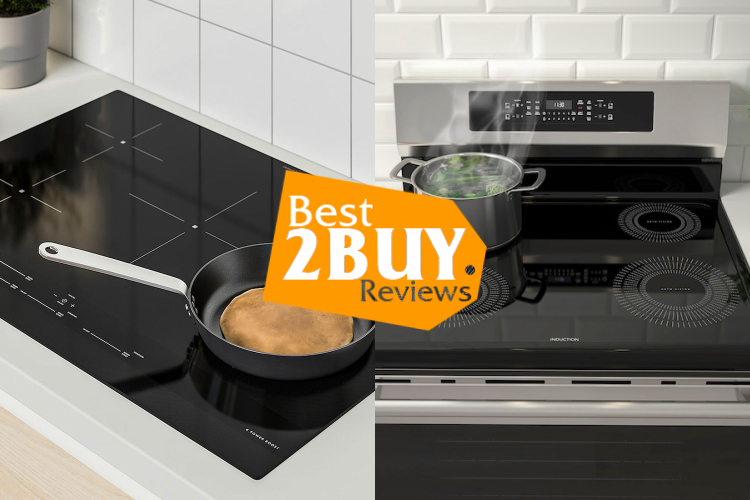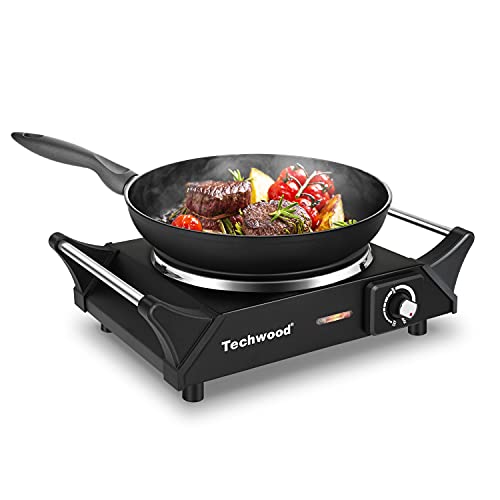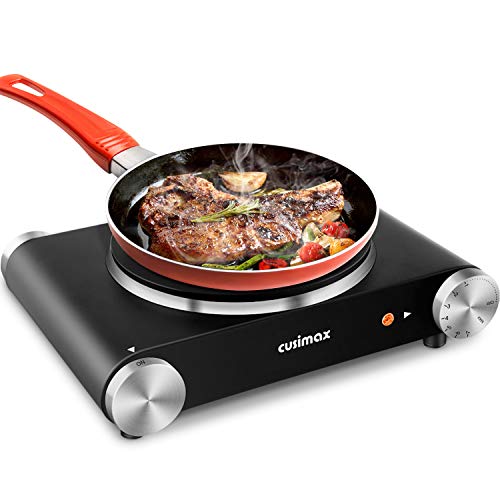Electric Induction Ranges: Everything You Need To Know

- 1. Electric Induction Ranges: Everything You Need To Know
- 2. What To Consider When Choosing An Electric Induction Range
- 2.1. Evaluate Your Kitchen Space
- 2.2. Set Your Budget
- 2.3. Cooking Zones and Size
- 2.4. Precise Power and Temperature Control
- 2.5. Safety Features
- 2.6. Check Cookware Compatibility
- 2.7. Explore Additional Features
- 2.8. Prioritize Energy Efficiency
- 2.9. Research Brand and Warranty
- 2.10. Installation and Maintenance
Over the years, the modern kitchen has undergone a remarkable evolution, largely attributable to the groundbreaking advancements in technology that have completely transformed our culinary practices. Among these myriad innovations, the electric induction range has emerged as a revolutionary force. Electric induction ranges, renowned for their efficiency, precision, and safety, have assumed a pivotal role in kitchens worldwide, reshaping the cooking experience for culinary professionals and home cooks alike. In this piece, we shall delve into the marvels of electric induction ranges, delving into their operational principles, myriad advantages, and pertinent factors to consider when selecting one for your kitchen.
What Is an Electric Induction Range?
An electric induction range is a cooking appliance that employs electromagnetic induction technology for heating cookware and preparing meals. Unlike conventional electric or gas stovetops, which first heat a burner and subsequently transfer that heat to the cookware, induction ranges heat the cookware directly by utilizing magnetic fields.
How Does an Electric Induction Range Work?
An electric induction range employs the principle of electromagnetic induction to directly generate heat within the cooking vessels. In contrast to conventional electric or gas stoves, which rely on heat transfer through conduction or radiation, induction cooking centers around the manipulation of magnetic fields. Here's an explanation of the process:
- Magnetic Fields: When an electrical current flows through a coil of copper wire positioned beneath the ceramic glass surface of the induction cooktop, it creates a potent magnetic field.
- Cookware Response: To utilize an induction cooktop, you'll need cookware equipped with a ferrous (iron-based) bottom. When you place this cookware on the cooktop, the magnetic field induces an electric current within the base of the cookware.
- Heat Generation: This induced electric current generates resistance within the cookware, resulting in rapid heating. Consequently, the cooking vessel itself serves as the primary heat source, directly cooking the food within it.
- Control and Efficiency: The appeal of induction cooking lies in its precise temperature control. By adjusting the power level, you can instantly raise or lower the heat, enabling meticulous cooking and swift responsiveness to alterations in cooking temperatures.
Advantages of Using An Electric Induction Range
- Rapid Heating and Efficiency: Induction ranges heat up significantly faster than traditional stovetops, while also minimizing heat wastage, resulting in superior energy efficiency.
- Enhanced Safety: Induction cooktops remain cool to the touch because they exclusively heat the cookware, reducing the risk of burns and kitchen accidents substantially.
- Precise Cooking Control: The precise temperature control offered by induction ranges facilitates the effortless simmering of delicate sauces and the perfect searing of meats.
- Effortless Cleanup: Since the cooktop itself remains cool, spills and splatters do not adhere to the surface, simplifying cleaning as you can wipe it down promptly.
- Space-Efficient Design: Induction cooktops typically feature a flat and sleek design, making them ideal for creating a minimalist and space-efficient kitchen layout.
- Eco-Friendly Operation: Due to their energy efficiency and minimal heat dissipation, induction ranges are environmentally friendly and contribute to reduced energy consumption.
- Versatility: Induction ranges are versatile and can accommodate a wide range of cookware types, as long as they possess a magnetic base, making them suitable for various cooking techniques.
What To Consider When Choosing An Electric Induction Range
With their sleek design, precise cooking capabilities, and energy efficiency, electric induction ranges have become a preferred choice for both professional chefs and home cooks alike. If you're thinking about upgrading your kitchen with an electric induction range, this comprehensive guide will take you through the crucial factors to consider for an informed decision.
Evaluate Your Kitchen Space
Begin your selection process by assessing the available space in your kitchen. Measure the width and depth of the area where you plan to install the induction range. Ensure there is proper ventilation and enough clearance from other appliances or cabinets to guarantee safe and efficient operation. Additionally, consider the type of installation that suits your kitchen layout—whether it's freestanding, slide-in, or built-in.
Set Your Budget
Electric induction ranges come in a wide range of prices, so it's vital to establish a budget before you start your search. Typically, these ranges are available in a price range spanning from approximately $1,100 to $4,400 for the most popular models. While premium models offer advanced features and aesthetic design, more budget-friendly options can still deliver excellent performance. Determine a realistic budget that aligns with your cooking needs and preferences.
Cooking Zones and Size
Consider the number of cooking zones or elements you need based on your cooking habits. Induction ranges typically offer four to five zones, with various sizes to accommodate different pots and pans. If you often prepare large meals or use oversized cookware, prioritize models with larger cooking zones.
Precise Power and Temperature Control
Induction cooking's key advantage is its precise temperature control. Look for ranges that offer a wide temperature range, enabling you to simmer delicate sauces or sear meats at high heat. Models with power-boost options can provide a quick burst of intense heat for faster cooking.
Safety Features
Safety is paramount in any kitchen, and induction ranges come with several safety features. Seek models with child lock settings, residual heat indicators, and automatic shut-off functions. These features ensure accident prevention and provide peace of mind during your cooking endeavors.
Check Cookware Compatibility
Induction cooking requires cookware with a magnetic base, such as cast iron or stainless steel. Ensure your current pots and pans are compatible with induction ranges, or budget for new cookware as part of your purchase.
Explore Additional Features
Consider any extra features that could enhance your cooking experience. These might include convection ovens for even baking, self-cleaning modes, programmable cooking settings, or smartphone connectivity for remote control and monitoring.
Prioritize Energy Efficiency
Induction ranges are known for their energy efficiency, but some models excel in this aspect more than others. Look for Energy Star-certified models or those equipped with energy-saving modes to reduce your electricity consumption.
Research Brand and Warranty
Research reputable brands recognized for their quality and customer support. Read reviews and carefully consider the warranty offered with the product to ensure you have coverage in case of any issues.
Installation and Maintenance
Before finalizing your purchase, confirm that you have the necessary electrical infrastructure to support an induction range. If not, factor in the cost of hiring an electrician for installation. Additionally, inquire about the maintenance requirements and any specific care instructions to prolong the lifespan of your appliance.
In conclusion, electric induction ranges have unquestionably transformed the culinary landscape, bringing about a paradigm shift in our cooking methods. Their remarkable attributes, including rapid heating, precise temperature control, and enhanced safety measures, have garnered widespread acclaim, endearing them to culinary professionals and home chefs alike. Though there are certain factors to weigh when selecting the ideal induction range for your kitchen, the advantages undeniably outweigh any potential drawbacks for a vast number of users. As technology continues its relentless march forward, it's truly exhilarating to contemplate the culinary wonders that lie ahead in the kitchens of tomorrow. Induction cooking isn't merely a passing fad; it offers us a tantalizing glimpse into the future of cooking, one characterized by efficiency and exactitude.











